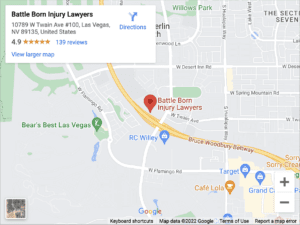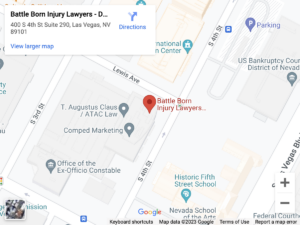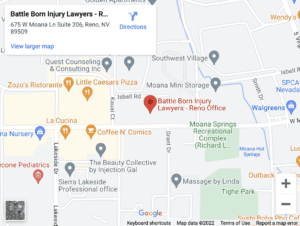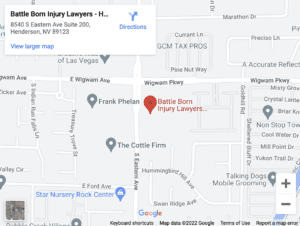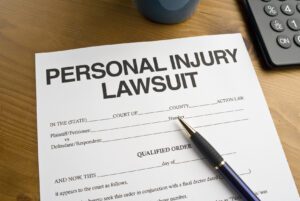
Many different types of civil claims exist. There are probate claims, contract claims, and personal injury claims, to name a few. A claim is simply an abstract legal right to receive compensation (typically money) from another party. A personal injury claim arises when one party injures another party, typically through culpable conduct such as negligence.
The party you have a claim against is not necessarily limited to the party who injured you. Typically, it is an insurance company representing the culpable party.
So you have a claim. What are you going to do about it? The two most common responses (other than ignoring it altogether, as some people do) are to commence Alternative Dispute Resolution (ADR) or file a lawsuit with a court.
Filing a Formal Claim With an Insurance Company
The first step in the claims resolution process is usually a demand letter sent from the plaintiff to the defendant’s insurance company. This letter will describe why the insurance company is liable for the plaintiff’s claim (their insured caused a DUI accident, for example). In most cases, the demand letter will state the dollar amount of the claim.
The insurance company will respond with a routine “reservation of rights” letter. From there, negotiations begin in earnest. The exact procedures, and the exact order in which these procedures are carried out, vary from case to case.
ADR: Negotiation, Mediation, and Arbitration
Negotiation, mediation, and arbitration are all ways of resolving claims without resorting to a lawsuit. They are often far preferable ways of settling claims than going to trial. Here are some of your options:
- You can negotiate your claim on your own (with the help of your lawyer), resorting to more forceful means (such as filing a lawsuit) only if negotiations stall.
- You can seek a neutral third-party mediator to help you come to a voluntary resolution of your claim.
- You and the opposing party can agree to hire an arbitrator (a private judge-for-hire) to resolve your claim in the same way that a court would, but with a lot less procedure and red tape.
- Some other means of ADR such as a mock trial.
Most personal injury claims never make it to trial because they are resolved through one of the foregoing ADR methods (negotiation is by far the most popular).
Why You Need a Lawyer for ADR
During ADR, you are going to hear one of three likely responses from the insurance company:
- “We’re not responsible for your claim because you can see right here in our policy that we don’t cover the type of claim that you are asserting”;
- “The accident was mostly your fault, so we owe you nothing”; or
- “Your demand letter greatly exaggerates the true value of your claim.”
At this point, you need a lawyer with negotiating experience. Insurance companies are full of tricks, but a skilled personal injury lawyer won’t fall for them.
Filing a Lawsuit to Stimulate ADR: Like FIiing a Shot Across the Bow
If your efforts at ADR are going nowhere, especially if the opposing party seems to be simply waiting for the statute of limitations deadline to expire, you might need to file a lawsuit. Since you can always withdraw a lawsuit before the final verdict, filing a lawsuit doesn’t necessarily mean giving up on ADR.
There are three main reasons why you might want to file a lawsuit even if you still hope to resolve your claim through ADR:
- To show the other side that you mean business. The judge will schedule a trial, which will put an end to any stalling by the other party. If you have a claim for a catastrophic injury, this tactic will definitely get the opposing party’s attention.
- The statute of limitations deadline for you to file a lawsuit (typically two years in Nevada) is approaching, forcing you to either file a lawsuit or abandon your claim.
- To gain access to the court-supervised pretrial discovery process, where each side gathers evidence that is in possession of the other party, including witness testimony.
Giving Up On ADR: Resolving Your Claim Through a Lawsuit
A personal injury lawsuit is a formal legal action in which an injured party goes to court to demand compensation for a personal injury that the defendant caused or was otherwise responsible for. The typical procedure for a personal injury lawsuit works like this:
- The plaintiff (the injured claimant) files a formal written Complaint with the court, and the defendant files a formal written Answer. It is the plaintiff’s responsibility to arrange for the formal notification of the defendant of the lawsuit. The plaintiff will also have to pay filing fees.
- The parties proceed with the court-supervised discovery process. Both parties gather evidence that is in each other’s possession, including testimony and (sometimes) information from third parties such as banks.
- The parties file motions and pleadings with the court. This might mean a motion to dismiss the case, a motion to withdraw the lawsuit (filed by a plaintiff in response to an acceptable settlement offer), or a motion to suppress certain evidence that one of the parties’ claims was seized illegally.
- The court will schedule a trial with at least one hearing, although some trials take several hearings to conclude.
You can probably appeal a verdict that displeases you, but appeals are not usually successful.
Schedule a Free Consultation With a Lawyer
Most personal injury lawyers will offer you a free initial consultation. They will also offer you a contingency fee arrangement, where you don’t pay your lawyer a dime unless they win compensation for you. You are likely to need a lawyer to avoid being “taken to the cleaners” with respect to most claims.


